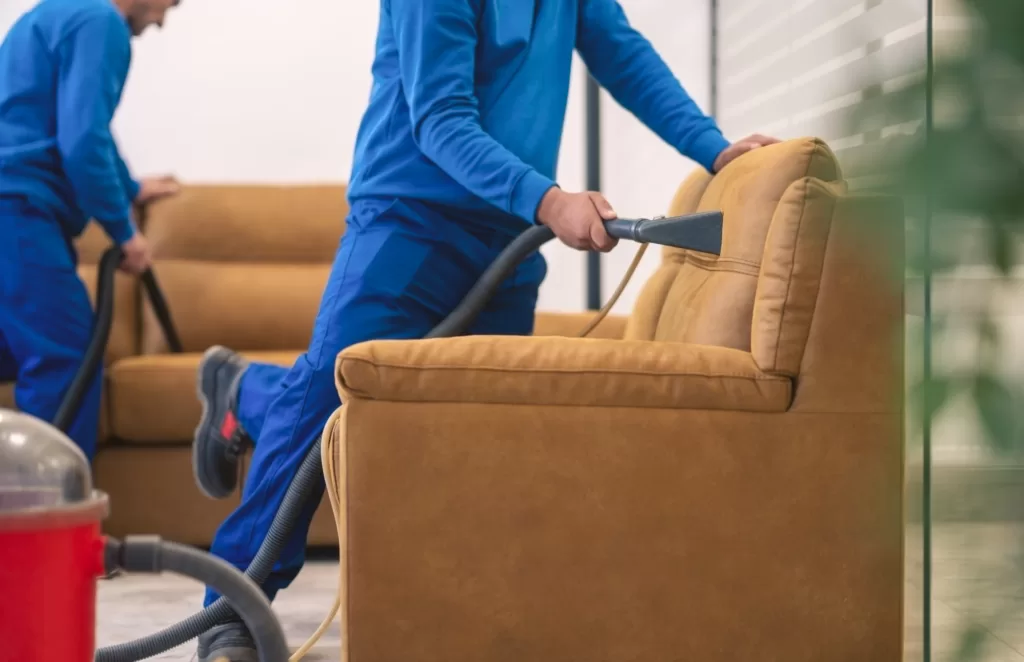Upholstered furniture adds comfort and style to any home. With proper care and maintenance, you can extend the life of your upholstered pieces for many years. Implementing some essential upholstery care practices helps you safeguard your investment in quality furnishings.
Below are some useful tips for maximizing the longevity of your upholstery:
Different materials require varied care strategies. Leather, for instance, benefits from regular conditioning, while fabric upholstery may need frequent vacuuming. Begin by checking the manufacturer’s label for specific care instructions to save time and prevent potential damage.
While regular home care is essential, the need for a deeper professional cleaning can vary depending on your household’s usage, the presence of children and pets, and the type of upholstery. In homes with high usage or those with children and pets, professional cleaning may be needed more frequently than the general recommendation of every couple of years.
For instance, experts like couch cleaners in Brooklyn, NY, can help rejuvenate your furniture, removing deep-seated dirt and stains. Assess the need for professional cleaning based on these factors, as it’s an investment that pays off by extending the life of your upholstery.
Vacuuming isn’t just for carpets. Your upholstered furniture also needs this treatment. A weekly vacuuming session removes dust, pet hair, and other debris, keeping your furniture fresh. Remember to use an upholstery attachment to avoid damage.
Accidents happen, but they don’t have to spell disaster for your upholstery. When spills or stains like ink occur, act fast. Blot the spill with a clean cloth to absorb as much liquid as possible. Then, use a suitable cleaner for your upholstery type. Avoid rubbing, as this can push the stain deeper into the fabric.
Exposing upholstered furniture to excessive direct sunlight causes premature fading and deterioration of fabrics. Alter the position of your furnishings or use window treatments to minimize direct sun exposure. Rotate pieces seasonally to help them wear evenly rather than only on one side. Keep upholstered items away from heating and cooling vents, which can dry out materials quickly.
Read Also :
Slipcovers and other removable furniture covers are designed to protect your upholstered investment from pet hair, stains, soils, and everyday wear. Use them on pieces that are used frequently by kids or pets.
However, remove covers periodically for cleaning to keep the upholstery in pristine shape. Wash removable covers according to manufacturer instructions. But before placing them back on furniture, air dry the covers to prevent moisture damage.
Strong cleaners and solvents can strip upholstery fibers, causing permanent damage. Never use bleach, ammonia, alcohol, or abrasive products on upholstery. Test furnishings first in an inconspicuous area before using any cleaning agent. Use only the gentlest soap-based cleaners specially formulated for upholstered fabrics. Rinse completely to remove any soap residue, which acts like sandpaper on fibers if left behind.
Pets can seriously damage upholstered furnishings with their claws, nails, teeth, and bodily fluids. Train dogs and cats to stay off unprotected upholstered pieces.
Use pet beds on low-traffic areas of sofas or chairs. Place washable quilts or blankets over upholstery as added protection. Groom pets frequently and trim nails to minimize snagging or puncturing of fabrics. Clean upholstery promptly after any pet accidents.
When cleaning upholstery, understand that furniture made from leather requires specialized care to maintain its softness and durability, and various types of leather may need different care products. Regularly dust and vacuum leather pieces. For routine cleaning, gently wipe the leather with a clean, damp, and soft cloth.
When it comes to conditioning, first identify the type of leather you have—aniline, semi-aniline, or pigmented leather—as each type may require a specific kind of conditioner.
Apply a suitable leather conditioner every three to six months, gently rubbing it into the surface and allowing it to fully absorb. Then, use a microfiber cloth to buff off any excess, achieving a subtle sheen.
Avoid using silicone or oil-based products, which can damage specific leather finishes. Always refer to the manufacturer’s instructions or consult a leather specialist if you’re unsure about the right products for your furniture.
Fluffing and rotating your cushions helps upholstery maintain its shape and resilience. Pillows and cushions tend to compress and form indentations with regular use. Every few days, flip and rearrange cushions to reduce uneven wear.
Odors can accumulate in upholstery, but there’s no need for them to become permanent residents. Baking soda is highly effective as a natural substance for absorbing odors. Sprinkle it on your furniture, let it sit for a few hours, and then vacuum it off. You’ll notice a fresher scent almost immediately.
Following essential upholstery care and maintenance tips help maximize the longevity of cherished furnishings. With preventative cleaning, protection from the elements, gentle handling, and prompt minor repairs, you can enjoy beautiful upholstered pieces for many years. A little regular effort goes a long way toward safeguarding your investment in quality sofas, chairs, and ottomans.